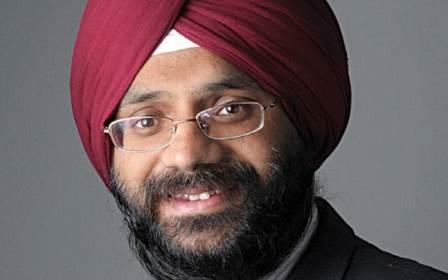 Puneet Pal is the Deputy Head-Fixed Income of DHFL Pramerica Asset Managers Private Limited with over 16 years of experience in the debt markets within the Mutual Fund space. Pal holds an MBA (Finance) degree from Symbiosis Institute of Business Management, Pune.
Puneet Pal is the Deputy Head-Fixed Income of DHFL Pramerica Asset Managers Private Limited with over 16 years of experience in the debt markets within the Mutual Fund space. Pal holds an MBA (Finance) degree from Symbiosis Institute of Business Management, Pune.
In this exclusive interview with Geojit Insights, Pal gives us his insights about the current market situation and guides us in taking prudent decisions in line with current geo political events.
What cautions do inflation numbers and geo political events send to debt investors? What is your call on the choice of maturities?
The Monetary Policy committee has lowered its inflation forecast for March 2019 in its last Monetary Policy Meeting. Since then crude oil prices have risen by 15% and will adversely affect inflation. Bond market yields have risen since then and are factoring in higher inflation. The key variable to watch out for will be the movement in crude oil prices and how well the monsoons fare. From a risk reward perspective we prefer the short end of the curve and would recommend to investors to consider Short Term Income Funds with portfolio maturities around 2 years.
What is your call on Banking and PSU funds in the current market scenario?
Banking and PSU funds invest a major proportion in AAA rated PSU and Bank Bonds and hence have a very good credit quality. Given the current volatility in bond markets and the flatness of the yield curve we would recommend investors to invest in those Bank and PSU Bond funds whose portfolio maturity does not exceed 2 years.
What is your comment on RBI’s recent policy moves and what policy stance can we expect from the central bank in the wake of higher April inflation numbers?
The Monetary Policy Committee has sounded hawkish in the policy minutes and in the wake of higher crude prices, we expect RBI to maintain a hawkish bias. The probability of rate hike has increased and if oil prices remain north of US$80/bbl then we expect RBI to hike rates either in June or August meeting though the bond markets have already factored in 50 bps rate hikes in FY2019.
What factors do you consider while including a paper in your portfolio? What quality factors do you look at?
All the credits are screened through an initial filter to examine outstanding credit ratings, any recent rating migration, broad financials, number of years of operations, any past default history, minimum rating threshold of A+ and if it is classified in any sensitive sector, wherein we have a negative or cautious view. Almost 80-90% of proposals screened are in general rejected at the initial stage on account of not meeting these hygiene factors.
Quantitative indicators in conjunction with qualitative factors play an important role in the selection process of adding issuers or papers in our Fixed Income Universe. Qualitative factors include quality of promoter or management, evaluation of corporate governance standards, length of business vintage, view on key sectors or industry, rating migration over a period of time, minimum rating threshold on the long term scale of A+ amongst other factors.
Quantitative factors differ from industry to industry. In case of financial sector issuers, we look at quality of parentage, strength of capitalization and leverage indicators, asset quality trends, profitability indicators as well as ALM analysis in addition to others. For non-financials, we focus more on leverage and debt protection metrics.
Not only are these parameters evaluated at the time of addition to fixed income universe but they are monitored stringently in addition to channel checks, interaction with stakeholders including rating agencies, management, competitors to ensure that the quality of due diligence is maintained and any early warning signs of stress in the portfolio, if any are highlighted.
What is your process of picking credit opportunities from the market? What filters do you install?
Corporate credits other than banks i.e. manufacturing entities and non-bank finance companies are subjected to an internal research process prior to being eligible for inclusion to the fixed income (FI) universe. Broadly our process of fixed income research is summarized as under:
- Initial screening.
- Primary research (meet with the promoters or senior management of potential borrower or issuer. The purpose of the direct client interaction is to understand the business objectives, industry, operating dynamics, business and revenue model and the relative strengths and weaknesses of the issuer)
- Secondary research (analysis that is carried out based on publicly available information including but not limited to company annual reports, rating rationales, interaction with the rating agencies, broker coverage -for listed entities, industry publications and media and news articles)
- Post research filtering (the prospects are filtered in line with our investment objectives)
- Addition to the fixed income universe (done subject to unanimous approval from our Investment Committee. If even one member of the IC dissents, proposals are not taken any further).
Periodic review and renewals (credit review is carried out quarterly -on receipt of quarterly unaudited information, and annually once audited results are released)
It is true that one should match his/her investment horizon with maturity of the fund? But are long bond schemes advisable now? Why?
I would say that along with the maturity of the fund, other factors play an important role like the credit quality and the strategy of the fund. It should also be remembered that the investment horizon should be minimum of 2-3 years even though the investor can exit the fund before that. The investor has to look at his risk appetite, investment horizon and the volatility of the asset class before investment. In the current environment it is better to stick to low duration products like short-term income funds as we believe that Interest rates have not topped out.
What long term prospects do you see in Indian debt markets in terms of opportunities?
There are immense opportunities in the Indian debt markets. Newer and innovative products will keep coming which will increase the depth and breadth of the fixed income markets in India. We already have interest rates futures markets which enable the retail investors to take a view on interest rates. Things are moving forward on Corporate Bond Repo and RBI has also modified the guidelines on Separate Trading of Registered Interest and Principal of Securities (Treasury STRIPS are fixed-income securities sold at a significant discount to face value and offer no interest payments because they mature at par). So all in all we think that bond markets will become more vibrant along with increase in scale and instruments.
What challenges or opportunities did the recent scheme rejig present?
There is no challenge in the new scheme categorization and we believe that it will reduce the clutter and increase the transparency level for the investors and help them in making the right investment choice.










